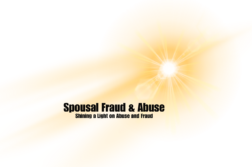Elder abuse is one of society’s most devastating yet underreported crises, often hidden away in the places meant to provide safety and care. The case of an 87-year-old man allegedly abused by two caregivers in a Texas nursing home is a stark and disturbing reminder of the vulnerabilities faced by older adults in care facilities.
Lisa Jo Cooper and Kecia Danielle Johnson, the caregivers in question, were accused of inflicting physical and emotional harm on their elderly charge, shaking public faith in the systems meant to protect our aging population. This heartbreaking incident raises urgent questions about the oversight and accountability of nursing homes and the broader issue of elder abuse.
The Allegations
According to reports, Cooper and Johnson were arrested after evidence surfaced of their mistreatment of an 87-year-old man in their care at a nursing home in Harris County, Texas. Allegations include acts of physical abuse that left the man bruised and traumatized. Disturbingly, the abuse was captured on video, making it undeniable and shocking in its cruelty.
The victim’s family, alarmed by changes in his behavior and unexplained injuries, took action to investigate, ultimately leading to the discovery of the abuse. This case highlights the vital role families play in safeguarding their loved ones in care facilities and the importance of vigilance in detecting signs of neglect or mistreatment.
The Broader Issue of Nursing Home Abuse
Sadly, the abuse suffered by this man is not an isolated incident. Elder abuse in nursing homes is a widespread problem, with studies indicating that as many as 1 in 6 older adults in care facilities experience some form of abuse annually. This abuse can take many forms, including:
- Physical Abuse: Hitting, slapping, or using physical restraints inappropriately.
- Emotional Abuse: Verbal insults, intimidation, or isolation.
- Neglect: Failing to provide adequate food, hygiene, or medical care.
- Financial Exploitation: Misusing or stealing a resident’s financial resources.
The harm caused by such abuse extends beyond physical injuries. Victims often experience severe emotional distress, a decline in physical health, and a diminished quality of life.
The Vulnerabilities of Older Adults
Older adults in nursing homes are particularly vulnerable to abuse due to a combination of factors:
- Dependence on Caregivers: Many residents rely entirely on staff for their daily needs, leaving them susceptible to neglect or mistreatment.
- Cognitive Decline: Conditions like dementia can impair a resident’s ability to recognize or report abuse.
- Isolation: Limited family visits or social interaction can prevent abuse from being detected.
- Power Imbalances: Caregivers hold significant control over residents, which can be exploited in abusive situations.
Accountability and Oversight
The case in Harris County raises serious concerns about the oversight of nursing home staff and the systems in place to protect residents. Care facilities are required to adhere to strict regulations, but enforcement varies widely, and understaffing or lack of training can exacerbate the risk of abuse.
Key areas that need improvement include:
- Staff Screening: Thorough background checks should be mandatory to ensure that caregivers have no history of abuse or neglect.
- Training: Regular training on elder care, including how to handle challenging behaviors without resorting to abuse, is essential.
- Surveillance: Increased use of video monitoring can serve as a deterrent to abuse and provide evidence in cases where mistreatment occurs.
- Reporting Mechanisms: Residents and their families should have clear, accessible channels to report concerns without fear of retaliation.
The Role of Families
The family of the 87-year-old victim played a crucial role in uncovering the abuse, demonstrating the importance of staying actively involved in the care of loved ones. Families can take several steps to protect their loved ones in nursing homes:
- Visit Frequently: Regular visits can help identify changes in behavior, mood, or physical condition that may indicate abuse.
- Ask Questions: Engage with staff and administrators to understand the care plan and ensure it is being followed.
- Look for Red Flags: Unexplained injuries, sudden weight loss, or withdrawal from social activities can all be signs of mistreatment.
- Advocate for Transparency: Support the use of monitoring systems and demand accountability from care facilities.
Legal and Social Implications
Cooper and Johnson face serious charges for their actions, reflecting the legal consequences of elder abuse. However, addressing the root causes of such incidents requires more than individual accountability. Society must push for systemic changes to ensure that nursing homes are safe, nurturing environments for the elderly.
Efforts to combat nursing home abuse should include:
- Stronger Regulations: Federal and state governments must enforce stricter standards for care facilities.
- Increased Funding: Adequate resources are needed to hire and train staff, reduce burnout, and maintain high-quality care.
- Public Awareness Campaigns: Educating the public about elder abuse can help identify and prevent incidents before they escalate.
- Community Involvement: Volunteers and advocacy groups can provide additional oversight and support for nursing home residents.
Moving Forward
The abuse of an 87-year-old man in a Texas nursing home is a tragic reminder of the vulnerabilities faced by older adults and the critical need for vigilance, accountability, and systemic reform. While the legal proceedings against Cooper and Johnson may bring some measure of justice, preventing future abuse requires a collective effort from families, care facilities, and society as a whole.
Elder abuse in nursing homes is not just a private tragedy—it’s a public health crisis that demands attention and action. By learning from this case and advocating for change, we can honor the dignity of older adults and ensure they receive the care and respect they deserve.

